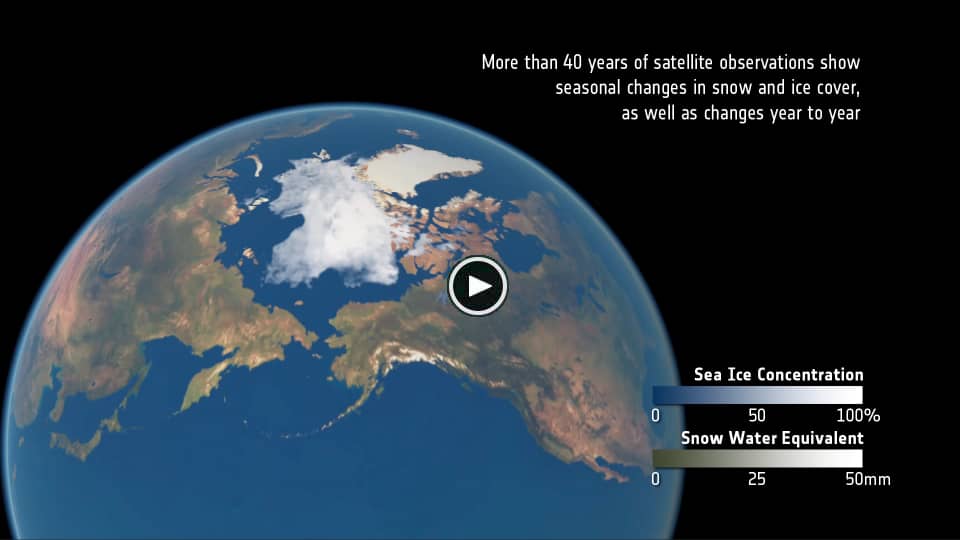
Change in the Arctic
Satellites play a vital role in monitoring the rapid changes taking place in the Arctic. Tracking ice lost
from the world’s glaciers, ice sheets and frozen land shows that Earth is losing ice at an accelerating rate.
Currently more than a trillion tonnes of ice is lost each year. The sooner Earth’s temperature is stabilised,
the more manageable the impacts of ice loss will be.
|
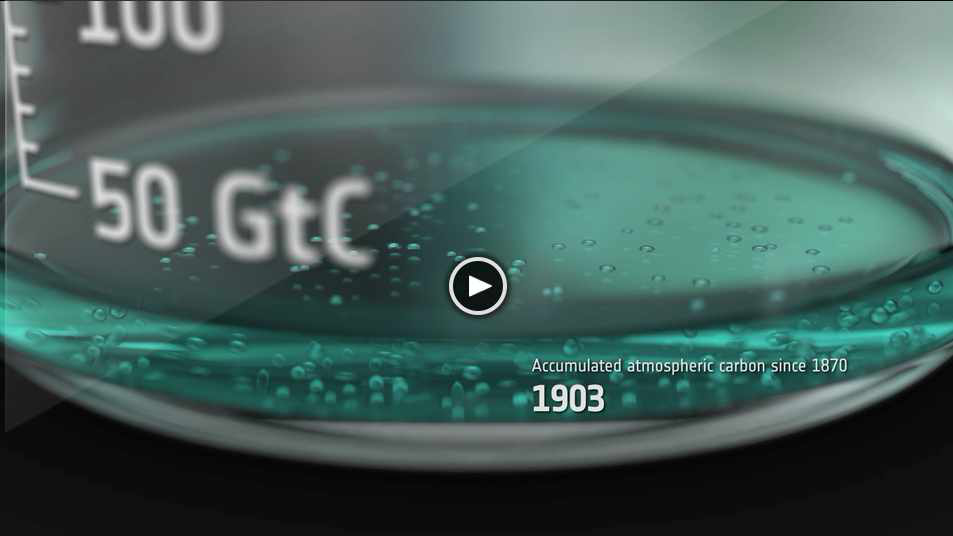
Counting Carbon
The Paris Agreement adopted a target for global warming not to exceed 1.5°C. This sets a limit on the
additional carbon we can add to the atmosphere – the carbon budget and only around 17% of the carbon
budget is now left. The CCI Regional Carbon Cycle Analysis and Processes project aims to help us gauge
whether we can stay within the 1.5°C carbon budget, or if more warming is in store.
|
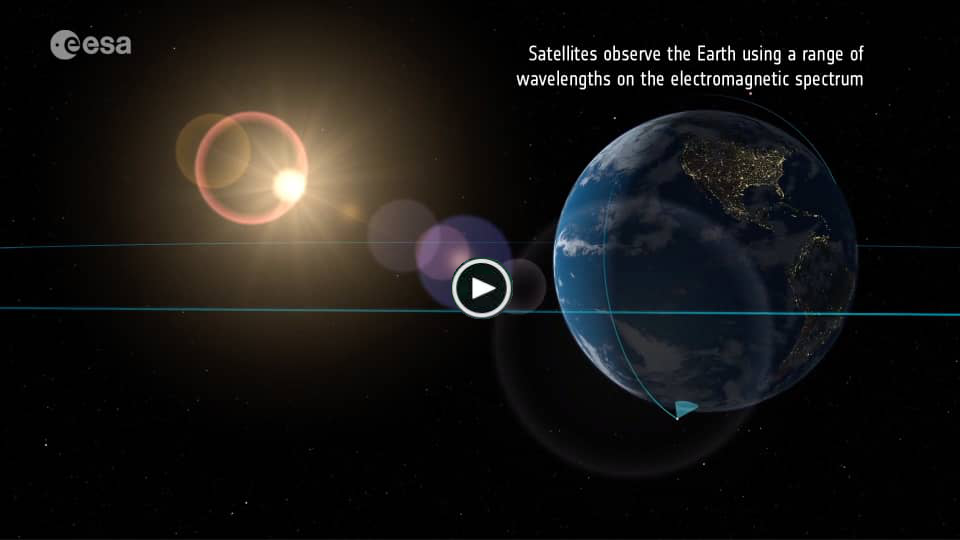
Tuning in to Earth's climate
Satellites observe the Earth using a range of wavelengths on the electromagnetic spectrum.
Different wavelengths allow us to probe different aspects of Earth’s land, atmosphere and ocean.
By sampling the electromagnetic spectrum at multiple wavelengths, we can build a more complete
picture of Earth’s complex climate system.
|
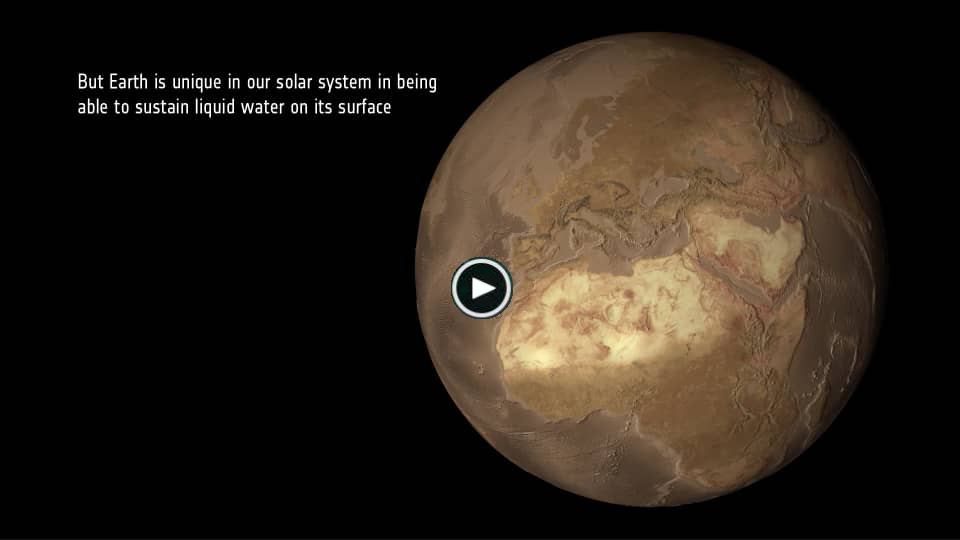
The changing water cycle
Imagine the world without water: as cold and lifeless as the planet Mars. Earth is unique in our solar system
in being able to sustain liquid water on its surface. Water is essential for life and for Earth’s climate,
helping transport heat around the planet, but it is difficult to track through the whole water cycle.
The global view offered by satellites helps. ESA’s Climate Change Initiative is looking at a range of
climate variables linked to the water cycle.
|
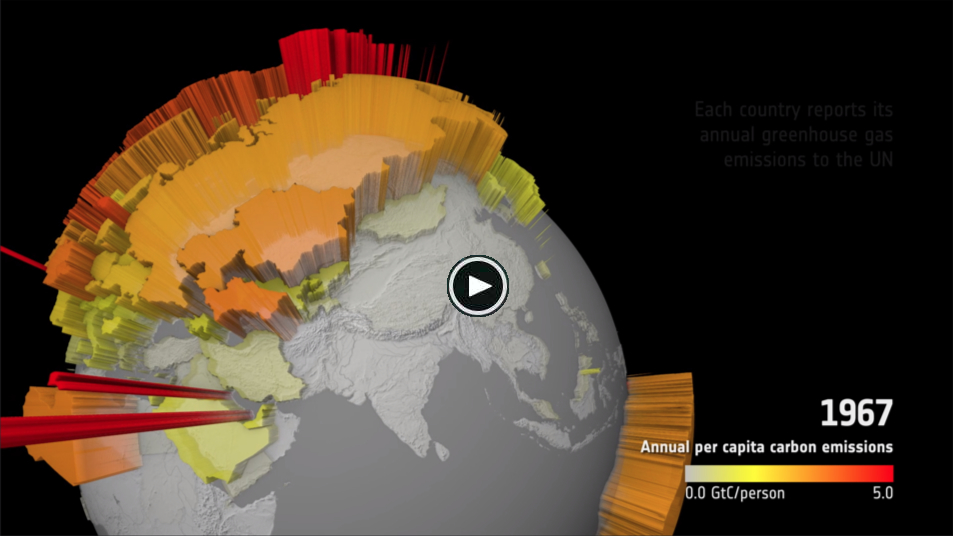
Counting Carbon Results
Updated 'Counting Carbon' animation used in COP27 (November 2022).
|
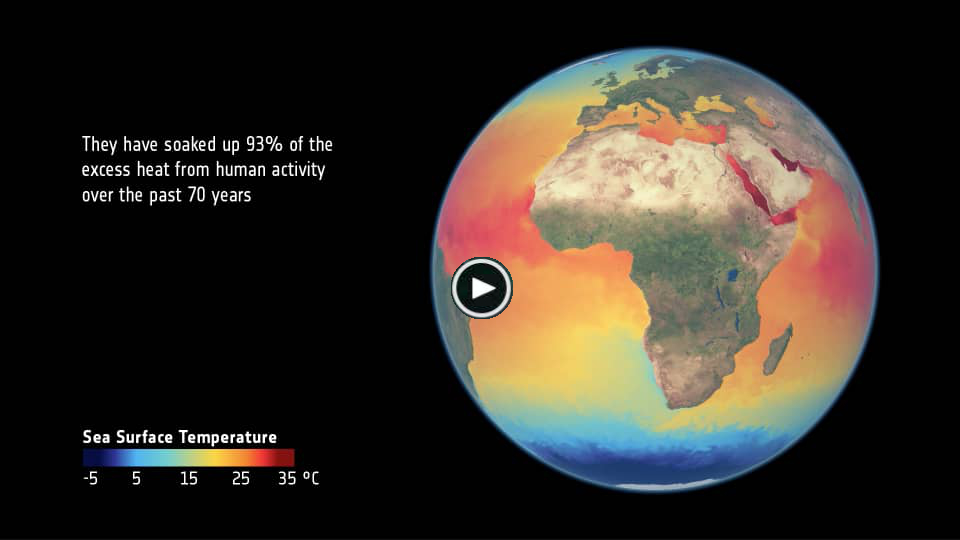
Oceans and Climate
Earth’s oceans are huge heat stores, soaking up 93% of the excess heat from human activity over the past 70 years.
Ocean currents redistribute heat around the planet, from the Equator to the poles. Where this ocean heat goes
influences weather patterns and regional climate. As well as absorbing heat, oceans are a natural carbon sink,
absorbing a quarter of carbon dioxide emissions from human activity. This has led to the acidification of
ocean water, threating marine life. The amount of heat and carbon dioxide absorbed depends on a number of
ocean variables, all of which can be measured from space.
|

Water Cycle animation extract
Short clip (42 sec) extracted from the longer (3 min 10 sec) animation 'The changing water cycle'.
|

Atmospheric ECVs
Short clip (58 sec) showing four atmospheric ECVs on the globe.
|
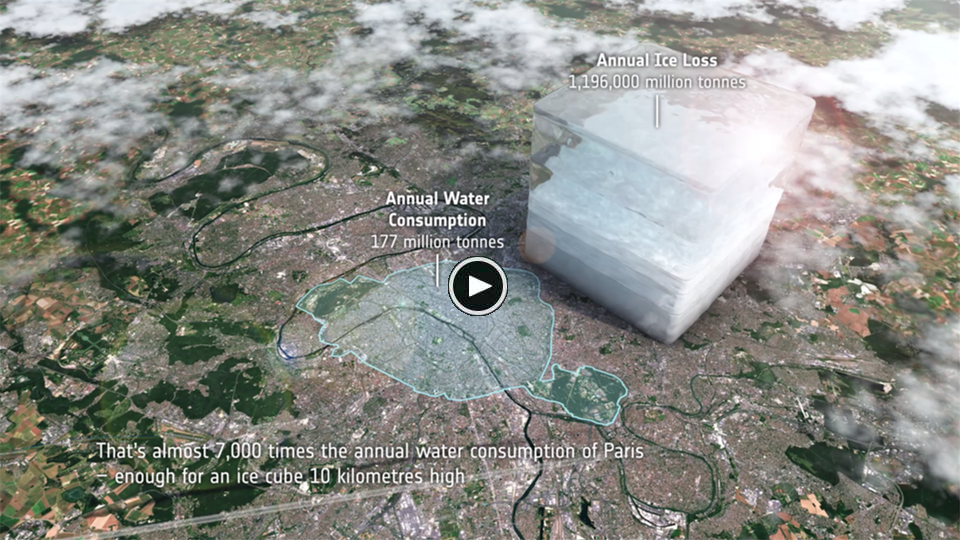
Change in the Arctic extract (Ice Cube)
Short clip (1 min) extracted from the longer (3 min 17 sec) animation 'Change in the Arctic', for use in social media.
|

Change in the Arctic extract (Ice Cube) - social media portrait
Short clip (1 min) extracted from the longer (3 min 17 sec) animation 'Change in the Arctic', for use in social media.
|

Change in the Arctic extract (Ice Cube) - social media square
Short clip (1 min) extracted from the longer (3 min 17 sec) animation 'Change in the Arctic', for use in social media.
|
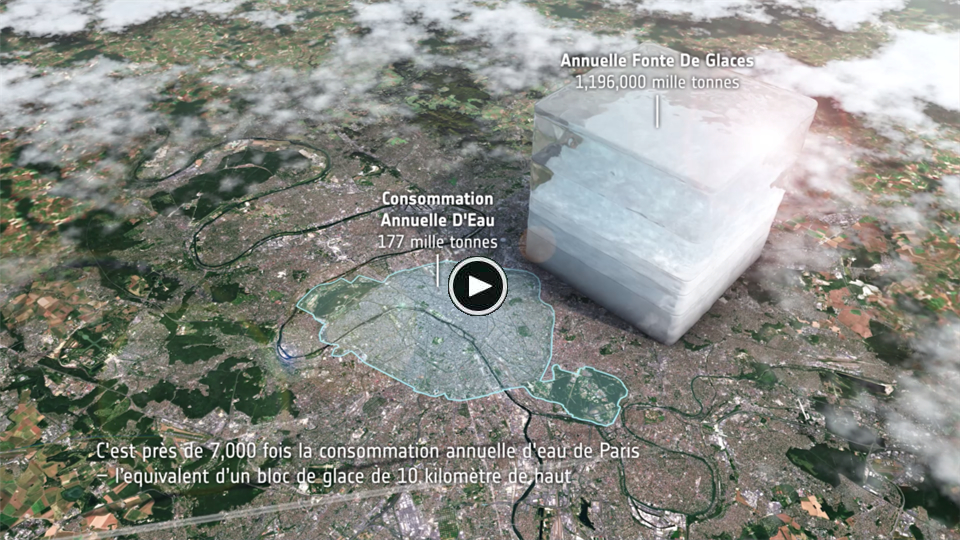
Change in the Arctic extract (Ice Cube) - French captions
Short clip (1 min) extracted from the longer (3 min 17 sec) animation 'Change in the Arctic', with French captions.
|
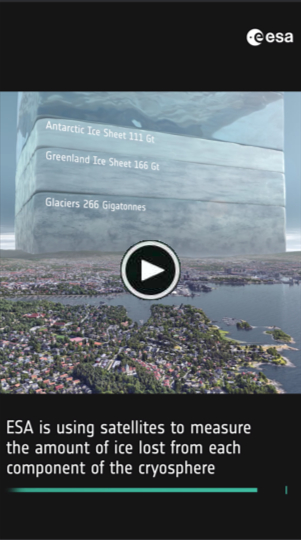
Change in the Arctic extract (Ice Cube), Oslo - social media portrait
Short clip (1 min) extracted from the longer (3 min 17 sec) animation 'Change in the Arctic', for use in social media.
|
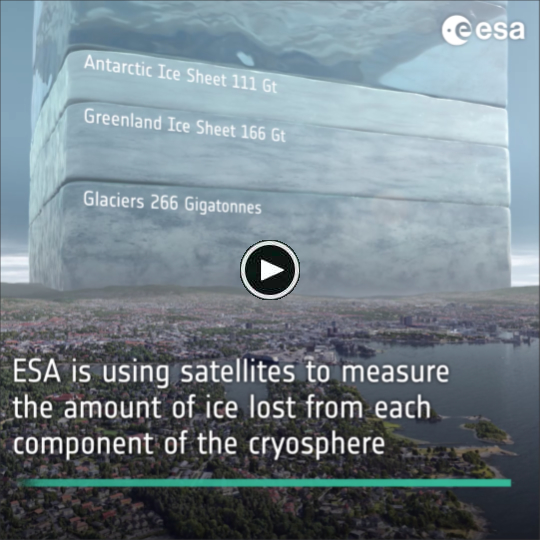
Change in the Arctic extract (Ice Cube), Oslo - social media square
Short clip (1 min) extracted from the longer (3 min 17 sec) animation 'Change in the Arctic', for use in social media.
|
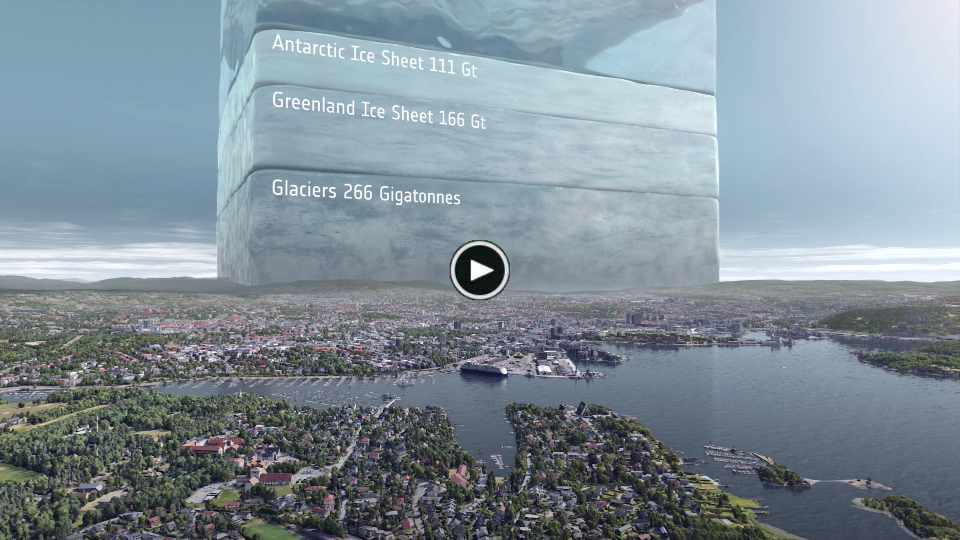
Change in the Arctic extract (Ice Cube), Oslo
Short clip (1 min) extracted from the longer (3 min 17 sec) animation 'Change in the Arctic' showing the ice cube over Oslo, Norway.
|